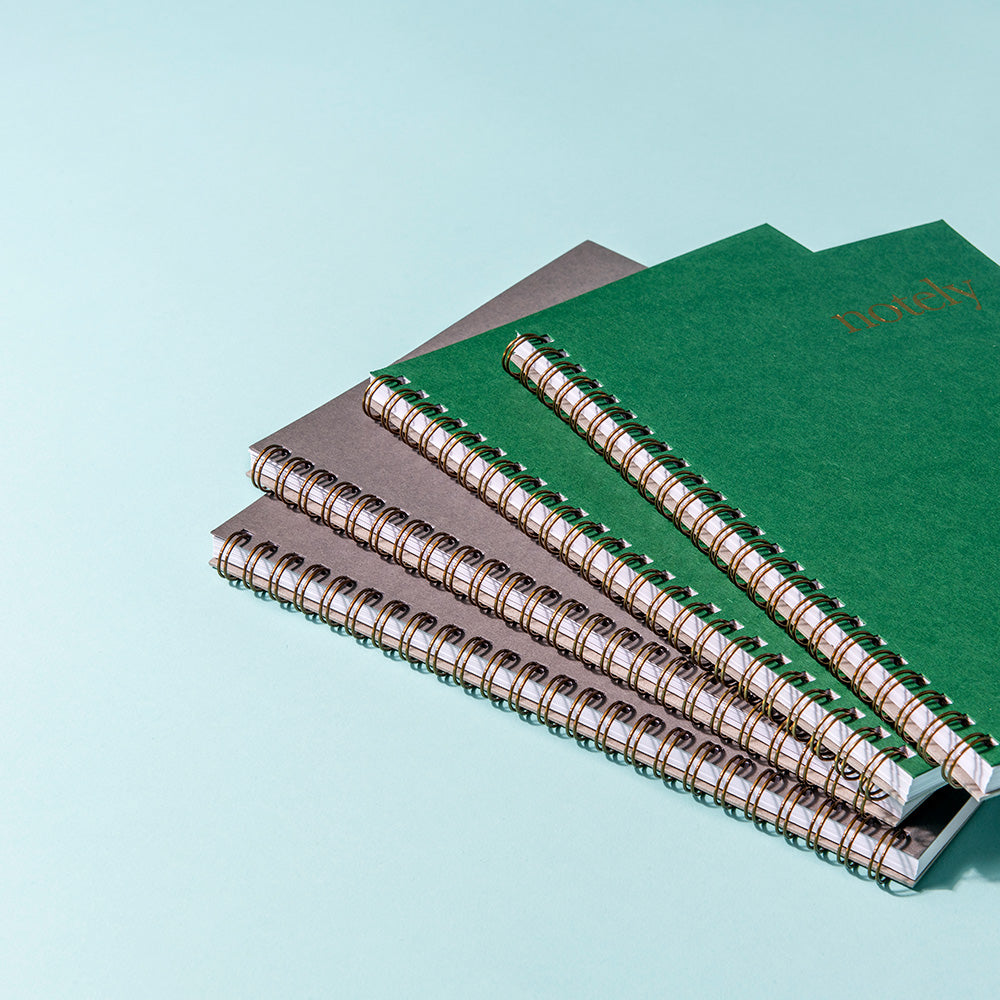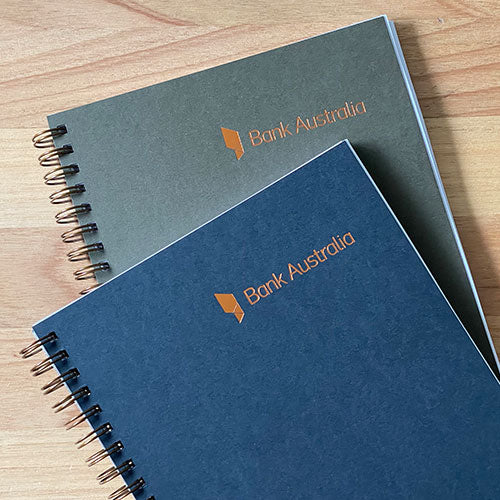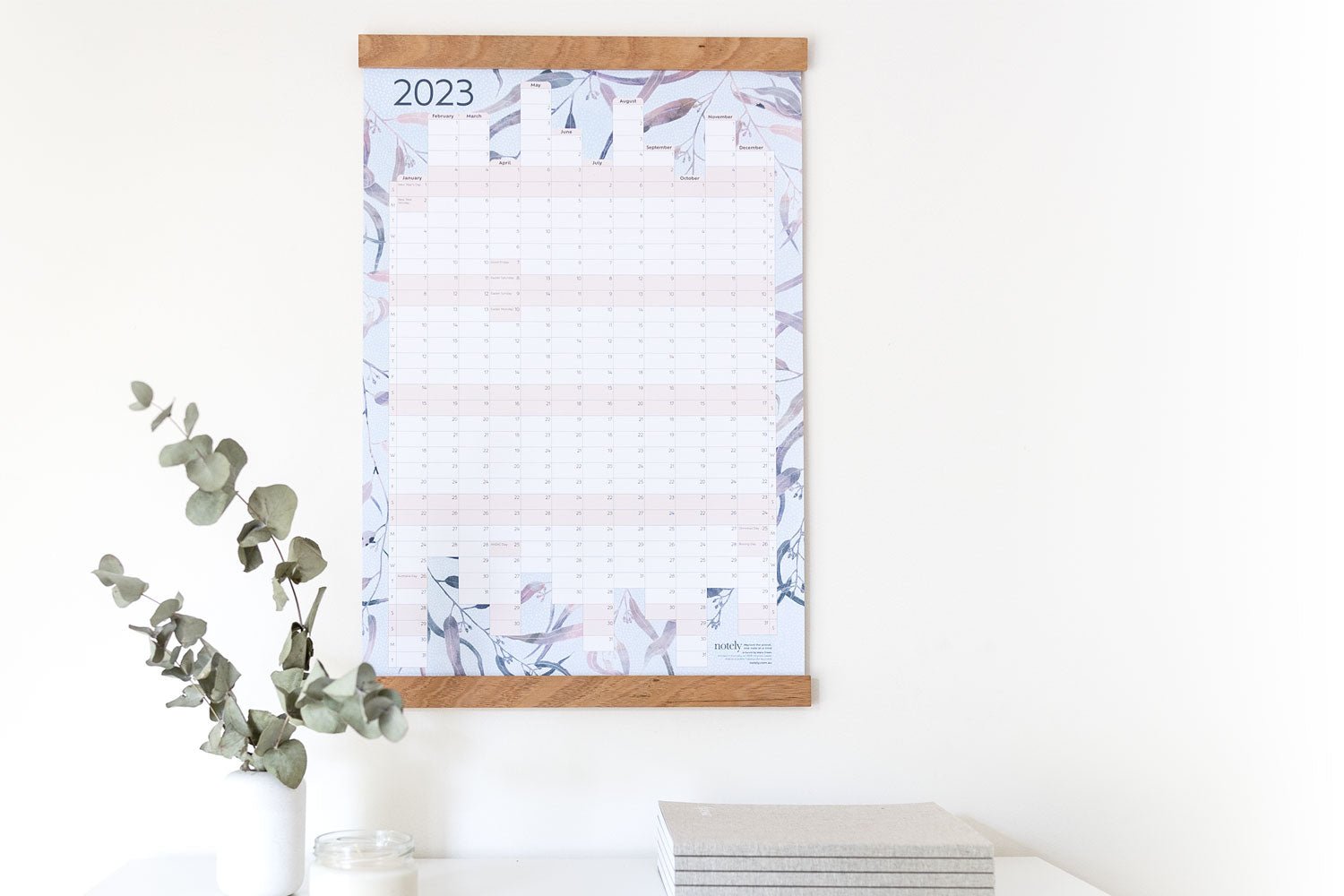Juggling work, social and family schedules can be a challenge to say the least.
You start off with good intentions, but soon enough, you’re run off your feet just trying to stay on top of all the client meetings, project deadlines, functions, networking events, coffee dates, nights out with friends, gym and yoga classes.
And, if you’re a parent, there are endless soccer practices, dance recitals, school functions, and parent-teacher conferences to attend.
Amidst all of this, just where are you supposed to the find time to do anything about the bright shiny goals you set at the beginning of the year?
Well, that’s where your wall planner is going to make all the difference!
In just six simple steps, we’re going to show you how to use your wall planner to get organised, stay on track and crush your goals.

Step 1 – Find the perfect location for your wall planner
If you’re using your wall planner for your personal schedule and/or goal tracking, you might want to keep it in a more private space – particularly if you’re using it to record sensitive information such as your weight and measurements. Depending on what you’re tracking you could pin it up in your bedroom, bathroom, study or home office. Just make sure that it is in a location where you’ll see it regularly.
To be effective, your family schedule wall planner needs to be positioned in a spot where the whole family can see it. A central location, such as the kitchen or hallway, usually works best. Of course, you may choose to hang yours elsewhere, so long as everyone who needs to see it will be able to do so regularly.
Step 2 – Make a list of all important events and dates
Grab a notebook or journal and make a list of all your upcoming activities and events for the next four months before selecting those that must be entered into your wall planner. Repeat this regularly throughout the year to ensure that your wall planner stays up to date.
Your wall planner could include:
- Annual events – birthdays, vacations, festivities, AGMs, public and school holidays
- Recurring events – weekly lessons, classes, practice sessions and date nights, monthly book club and/or committee meetings
- Ad hoc events – catch-ups with friends, work functions, conferences, concerts, doctor and/or vet appointments, play dates, student-free days, and sports days.
Step 3 – Make a list of all your mini-goals and milestones
If you haven’t done so already, grab a notebook or journal and make a list of your goals for each of area of your life: home, career, family, relationships, health/wellness, finances, and so on. Next, break each goal down into manageable mini-goals. Then turn your mini-goals into milestones by adding realistic due dates by which you hope to achieve your mini-goal.
For more on goal setting, take a look at our article Get ready to flip your fears & smash your goals!

Once you’ve turned your goals into achievable milestones, it’s time to pop them into your wall planner. This will give you a bird’s eye view of the journey you need to take to achieve your goals. Don’t forget to include review and reward dates to keep you motivated and on track.
There is no end to the types of goals you could use your wall planner to achieve, including:
- Health goals – for example, if you plan to lose 5 kg over the next 10 weeks, you could enter a mini-goal of losing 500 g per week. Mark off your weigh-in and fitness assessment days on your wall planner and enter your goal weights and measurements for those days. Enter your actual readings beside the goal amounts to track your progress.
- Study goals – use your wall planner to keep track of the relevant course registration and fee payment dates, your study goals for each week, assignment due dates, meetings with supervisors and classmates, and the dates of tutorials, tests and exams.
- Skills-based goals – a wall planner is an excellent tool for planning and tracking your progress when it comes to skills-based goals, such as learning a new craft, musical instrument or another language. Enter your chosen milestones and use your planner to track your progress.
Step 4 – Get colourful
Grab a handful of coloured pens and choose a colour to represent each area of your life (e.g., home, career, family, relationships, health/wellness, finances). Use your chosen colour to enter all the mini-goals and milestones you created for each area. This will help you to track multiple goals on a single wall planner and still have a clear idea of how things are progressing.
For family scheduling wall planners
Gather the family and let everyone choose their favourite colour. Once you’ve all made your choices, enter each person’s activities, events, games, practice sessions and lessons into the wall planner in their chosen colour. This allows you to see at a glance who needs to be where and when.
Step 5 – Create a key
When you’re tracking a lot of different goals or the activities of a busy family, a key will help to fit all the events, activities, mini-goals and milestones into the space available on your wall planner.
You key will be a series of symbols that represent different activities. For example, L5kg could represent your mini-goal to have lost 5kg by a certain date. MDR could stand for “Michelle’s Dance Recital”.
Use a notebook or pin a sheet from a writing pad next to the wall planner to keep a record of the meanings of each shorthand symbol.
You can also come up with shorthand ways to highlight important goals or events, indicate that prep work is required (perhaps with an asterisk) and to show that events have been cancelled or rescheduled.
When tracking your progress, you could create symbols to represent any wins, failures and/or stumbling blocks you’ve encountered along the way and take note of these during your reviews.
A notebook or journal will help you to keep track of the meanings associated with the symbols as well as to write about the things you’ve learned from your failures, how you plan to overcome stumbling blocks in future, and how you plan to reward your successes.
Step 6 – Regularly update your wall planner
Keep your wall planner fresh and active by regularly updating it.
Set aside time each week, fortnight or month to review and update your goals. Note what’s working and what is not. Pick new goals if you’ve achieved them and/or the current ones are no longer serving you and update your wall planner to reflect your new path.
Family activities are often in a state of flux, so it’s worth reviewing your family wall planner once a week to make sure you’re all on the same page. Encourage everyone in the family to join in. Check that all activities in the planner are current and correct, that any changes to events have been noted, and that any new ones have been added.
With these simple steps in place, you can look forward to your most organised and successful year yet!
Before we go, here are a few tips to help you choose the best wall planner for your purposes.

What to look for in a wall planner
The answers to these four quick questions will help you to find your ideal wall planner.
1. What will you be using your wall planner for?
Wall planners are incredibly versatile. They are great for staying on top of your personal appointments and tracking goals, as well as providing a broad overview of the entire family’s schedule.
With all these functions in mind, it’s worth getting a few wall planners and using a different one for each purpose. That way you can keep things clearly visible and avoid the overwhelm that comes from looking at an overcrowded planner.
To get started, why not order one (or more) gorgeous wall planners from our environmentally friendly and sustainable range today?
2. How much wall space is available in your home or office?
Ideally, you want a wall planner with sufficient space so you can add in all your appointments or milestones and still be able to see them at a glance. However, if wall space is limited at your place, you may opt for a few smaller wall planners.
Our Notely wall planners are available in two convenient sizes to accommodate both situations. The A2 portrait wall planner is very versatile and is suitable for most homes or offices. If you have more space and/or a large family, you’ll love our new larger A1 landscape planner.
3. What are the sustainability and environmental impacts?
When choosing your wall planner, it’s important to consider the sustainability of the stationery used, and its impact on the environment.
At Notely, we believe that you should be able to get organised and stay on top of your goals without impacting the world’s forests. That’s why we’ve made it our mission, with your help, to replant 100,000 trees by 2025.
One tree gets planted with every order we receive, and every third order protects an extra 2m2 of native rainforest. You can read more about our mission here.
What’s more, our wall planners are made from 100% recycled FSC-certified card, so they’re light on the environment.
4. Is the wall planner aesthetically pleasing?
Your wall planner should be more than just a great organisational tool, it should add to the ambience of your room. Afterall, you’ll be looking at it often. So, you want it to be attractive as well as functional.
At Notely, we work with talented local artists and designers who help us create stunning wall planners, notebooks and journals that inspire and motivate.
This year, we collaborated with Gold Coast Artist Maia Green to create a beautiful wall planner adorned with her intricate leafy designs. The result? A delicate, fresh wall planner that will lighten and brighten your room and leave you feeling invigorated every time you look at it.
Ready to get organised, stay on track and crush your goals?
Head over to our wall planner page, nab yourself one of our delightful wall planners, then you’ll be just six simple steps away from success!
Just between us, these beauties are selling fast and stocks are limited, so don’t delay, get yours today!

![Spearmint A6 Pocket Notebooks [BULK 8 PACK] - Notely Lined](http://notely.com.au/cdn/shop/products/spearmint-a6-pocket-notebooks-bulk-8-pack-notely-399099_1600x.jpg?v=1699275130)








